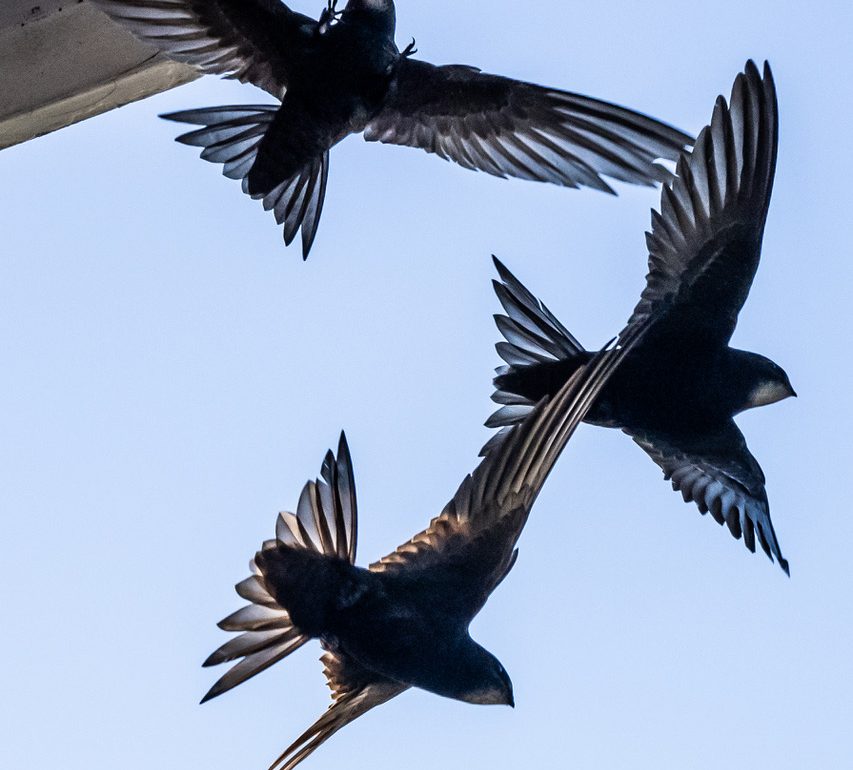
We are fast approaching what is, for me, one of the most poignant times of the year. It’s when I step outside my back door, look up, and fail to spot the black scimitar shape of a Swift, coursing across the sky. The departure of the Swifts marks the decline of summer just as markedly as the arrival of the first Cuckoo ushers in the spring. I usually see my first Swift of the year towards the end of April: this year it was on the 29th, while in 2023 it was two days earlier. However, it’s not until the end of the first week of May that the majority of the breeding birds return to our village. For the next 11 weeks they are present more or less constantly, and its unusual to scan the sky and not see (and hear) at least a couple of birds, and often many more.
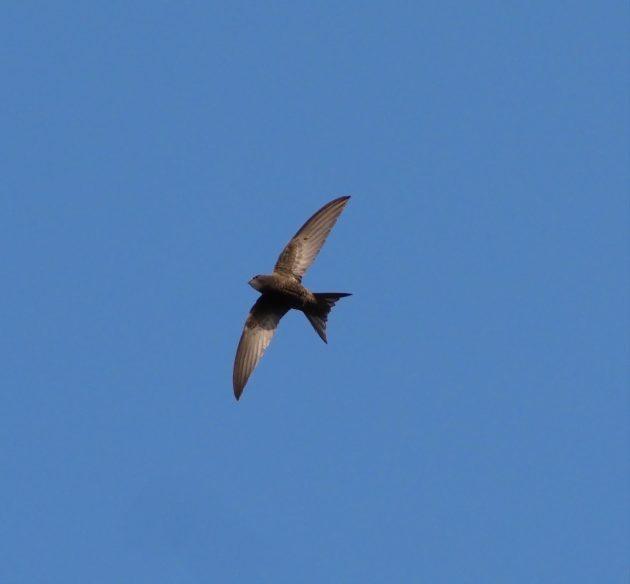
The Common Swift, Apus apus, is the most widespread of all the world’s 114 swift species, breeding throughout much of Europe and far into Asia, and wintering in sub-Saharan Africa
May is the quietest month, as the returning birds soon get down to the urgent business of breeding. The first eggs are usually laid at the end of May or sometimes in the first week of June, but this can vary depending on the weather. Strong winds can delay the start of laying, as air-borne insects are scarce in windy conditions, and the female has to be in peak condition before she starts laying – a swift’s egg weighs one twelfth of the weight of the adult bird. The clutch is two, sometimes three, with incubation usually not starting until the clutch is complete. Both sexes incubate, with the eggs taking an average of 19 or 20 days to hatch. If the weather in June and early July is good, then the young birds will fledge six weeks after hatching. In poor summers, when the parents struggle to find sufficient food for their brood, the young birds may remain in the nest for as long as eight weeks.
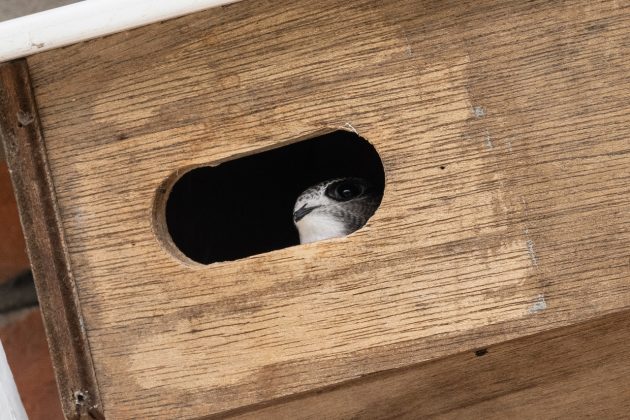
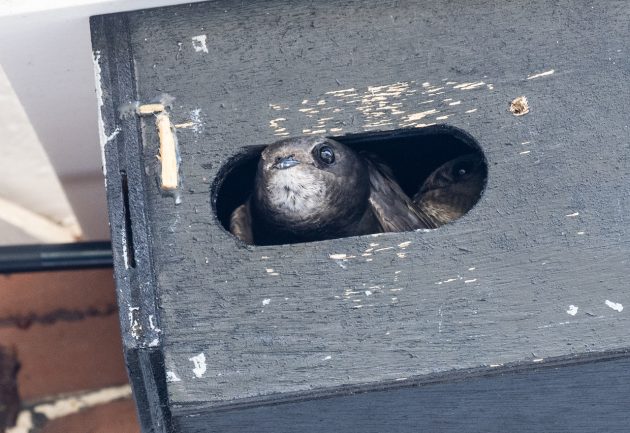
Young Swifts in nest boxes. These birds were photographed in mid July, shortly before fledging (Photographs by Martin Garwood)
Unlike most young birds, which are fed or tended by their parents after they have left the nest, young Swifts have to fend for themselves as soon as they fly, which explains why they remain in the nest for such a long period. Once they have launched off from their nest, they are on their own, instinctively mastering not only the skill of flying, but also feeding on the wing. We don’t know for sure, but it seems likely that the young birds head south, starting their migration soon after they leave the nest, leaving behind somewhat bewildered parents who will still attend the empty nest.
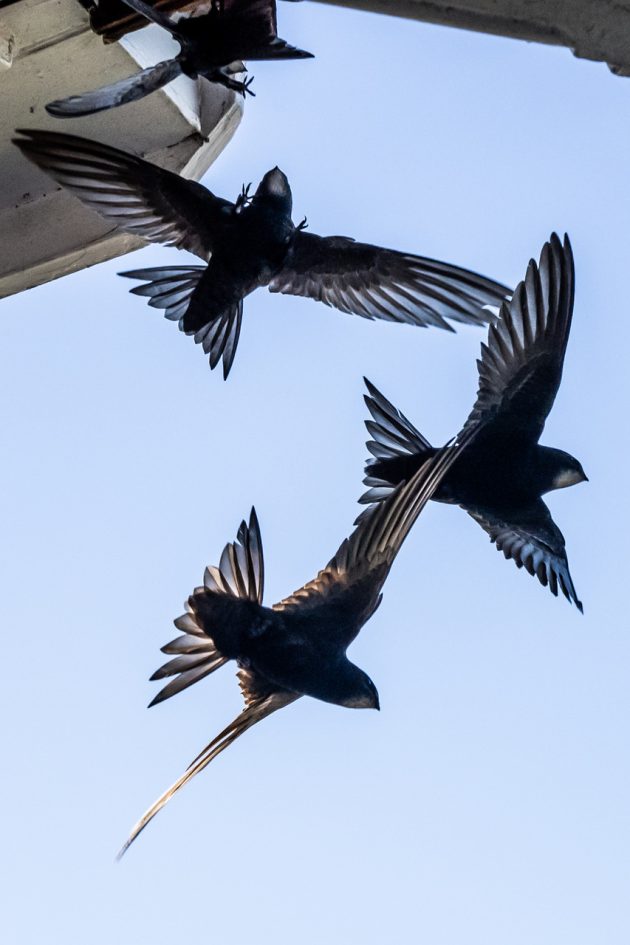
Young, non-breeding Swifts investigating nest sites. Known as bangers, they bang on existing nests with their wings and scream at the inside to see if the nests are occupied (Photograph by Martin Garwood)
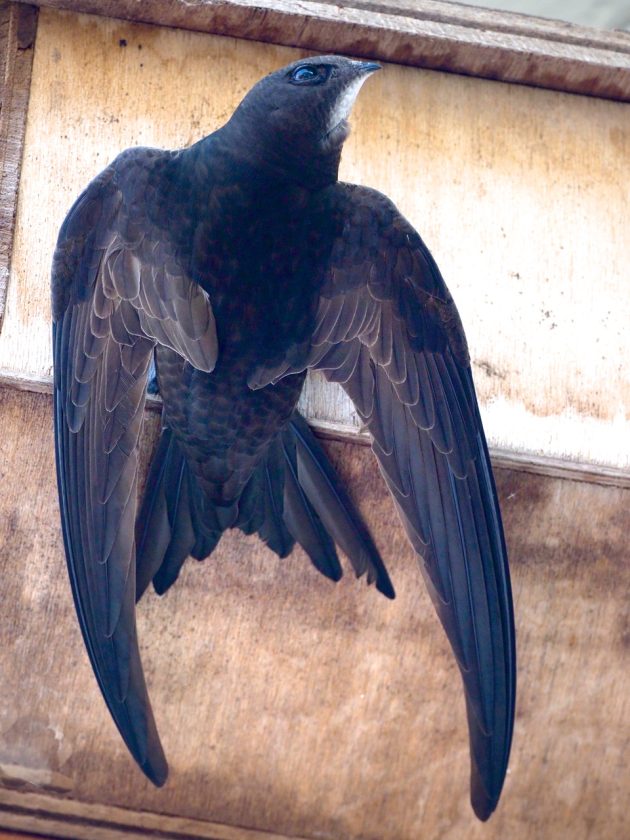
A banger at a nest box. Swifts are long lived birds, not breeding until they are three or four years old (Photograph by Martin Garwood)
Swifts have undergone a long period of decline in the British Isles, and have been red-listed here since 2021: according to figures from the British Trust for Ornithology, the population suffered a 60% fall between 1995 and 2020. There are a number of reasons put forward for this, of which the most likely seems to be loss of suitable breeding sites. They favour old buildings for nesting – under the eaves, under roof tiles, or anywhere they can squeeze in. New buildings rarely have space for these birds, while conversions and updates to old buildings all too frequently exclude the birds that used to breed there.
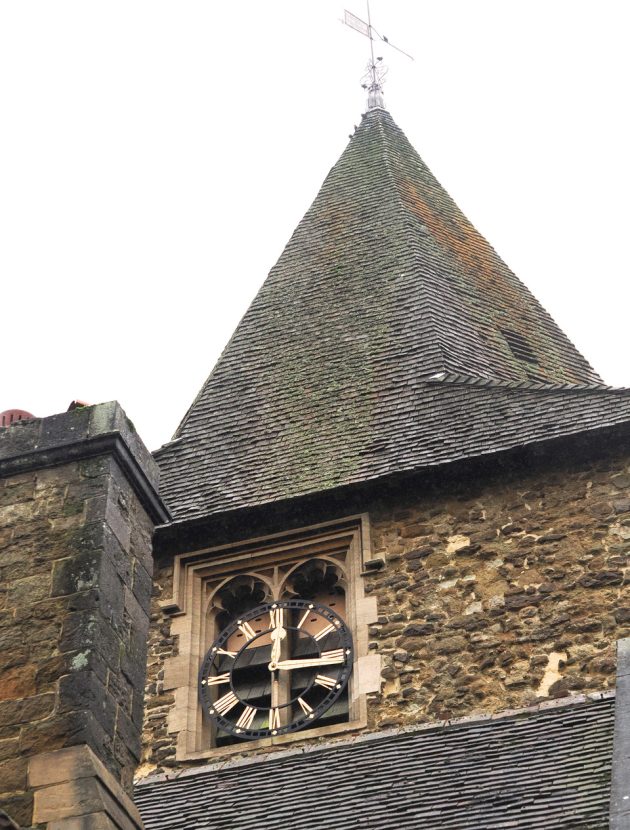
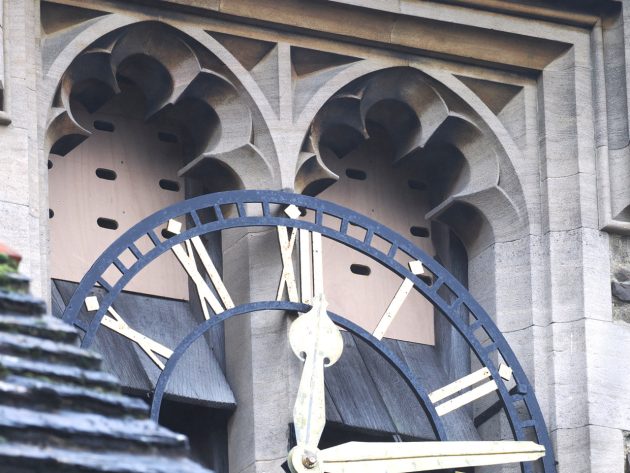
The church of St Mary at Westerham in Kent. When the church was reroofed the Swifts lost their traditional nesting sites. The nest boxes behind the clock have helped provide suitable new sites (Photograph by Martin Garwood)
Fortunately Swifts have many admirers, and there are now a number of charities working hard to ensure that the birds do have somewhere to nest. Here in my home county of Suffolk the Suffolk Bird Group, together with the Suffolk Wildlife Trust, campaigns for Swifts under the SOS (Save our Swifts) banner, installing boxes on houses, churches, libraries, even cinemas, as well as raising public awareness of the Swift’s plight. It has been remarkably successful, but there’s still much more that can be done.
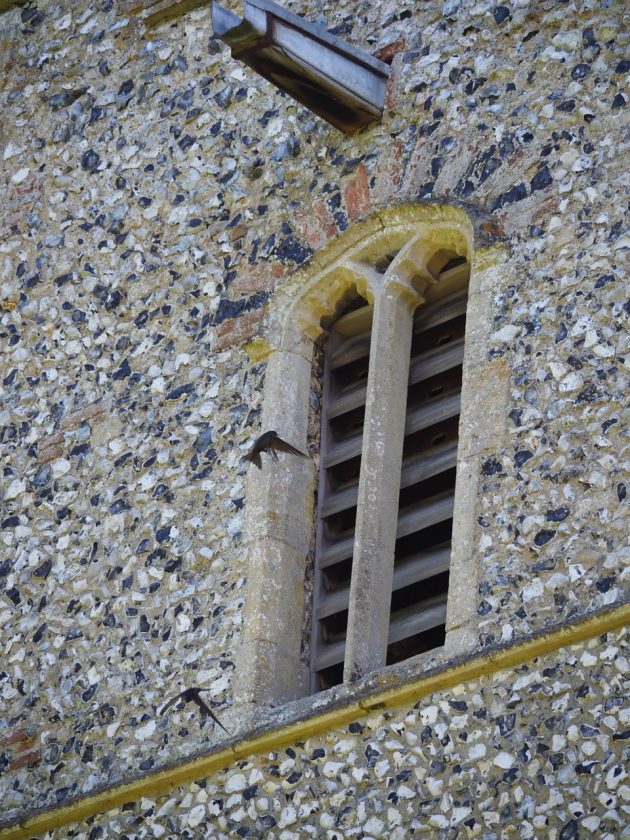
St Mary the Virgin at Santon Downham, Suffolk, now has a thriving Swift colony, nesting in boxes hidden behind the louvres of the bell tower
My village has a number of old buildings that support nesting Swifts. Numbers of swifts seem to be stable: I estimate the village supports between 20 and 25 pairs. However, I suspect that the population is restricted by the suitable breeding sites available. One potential new site would be the church tower. Erecting boxes in church towers is now accepted practice, and supported by the Church of England, though persuading church wardens to support such projects can be hard work, as I have found from my own experience.
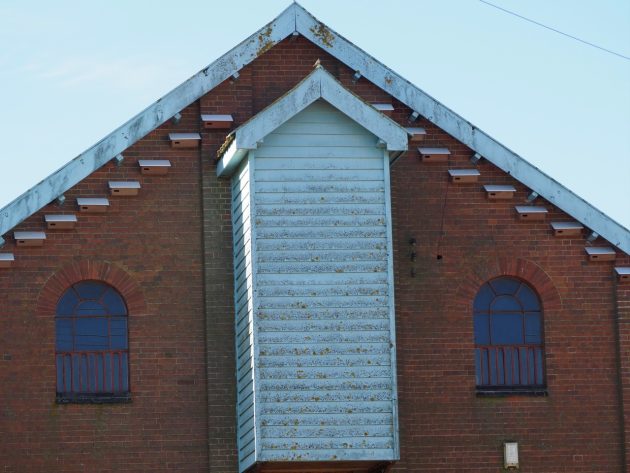
Swift boxes erected on an old mill on a Suffolk farm. It can take several years to attract nesting Swifts to a new site. Here the first pairs moved in within two years
This summer’s weather has been variable, and probably not a great one for the Swifts, but nor has it been a disaster. The best displays by the Swifts are usually in the second half of July, which is when numbers peak. The evening of Sunday, 21 July, was a classic. We had just enjoyed a minor heatwave, and on the Sunday a partly cloudy day gave way to a sunny evening. This was perfect weather for the Swifts, and for two hours I enjoyed a wonderful display of Swifts racing across the sky, sometimes joining together in noisy screaming parties, at other times silently soaring high into the clouds. Then, as the light started to fade, the birds flew higher and higher and became difficult to see, even though I could still hear them. Though this was the biggest gathering, successive nights also produced gatherings of more than 30 birds.
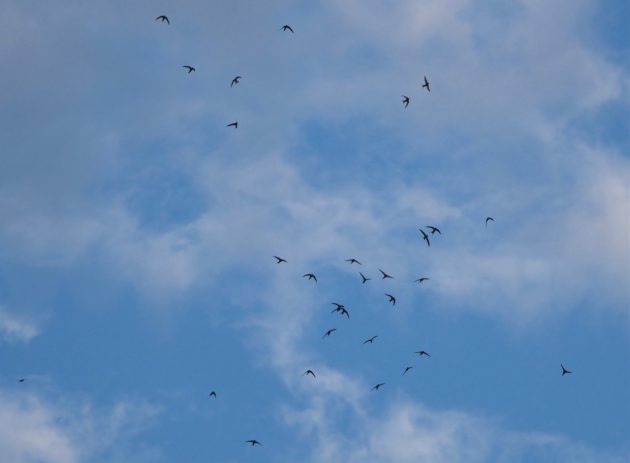
A July congregation. Counting Swifts is difficult, but photographs can reveal exactly how many birds are present. There are 31 birds here
Estimating their numbers was difficult, as their speed makes them difficult to count. My guess was between 20 and 30, but I took a series of photographs, capturing as many as 30 birds in one shot, proving that my guess was a serious under-estimate, and that the true number was well over 40, and perhaps as many as 50.
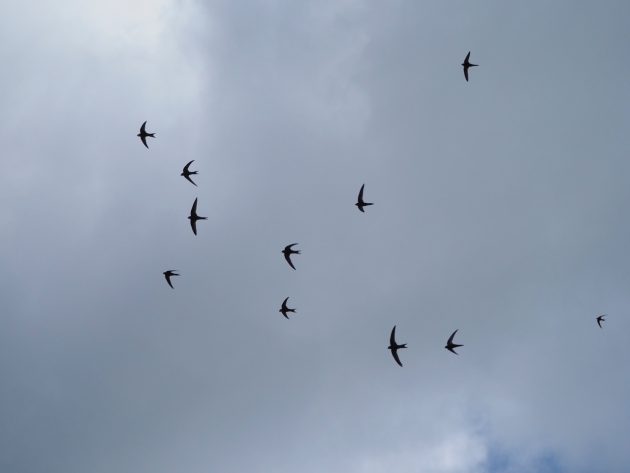
A typical summer screaming party
The following evening, at the same time, I struggled to find a single Swift. Had they all gone? They hadn’t, for as the shadows lengthened more and more birds appeared, though they failed to put on the ecstatic display of the night before. There were certainly fewer birds, but there was probably at least 30, possibly more.
By the end of this month the bulk of the population will have left for the wintering grounds in sub-Saharan Africa. A few birds, possibly still with young in the nest, will remain until the middle of August: in 2023 my last sighting was of three birds on 14 August. I might see a few birds on migration on the coast in September, but I’m unlikely to see another over the village for another eight months. I will miss them.
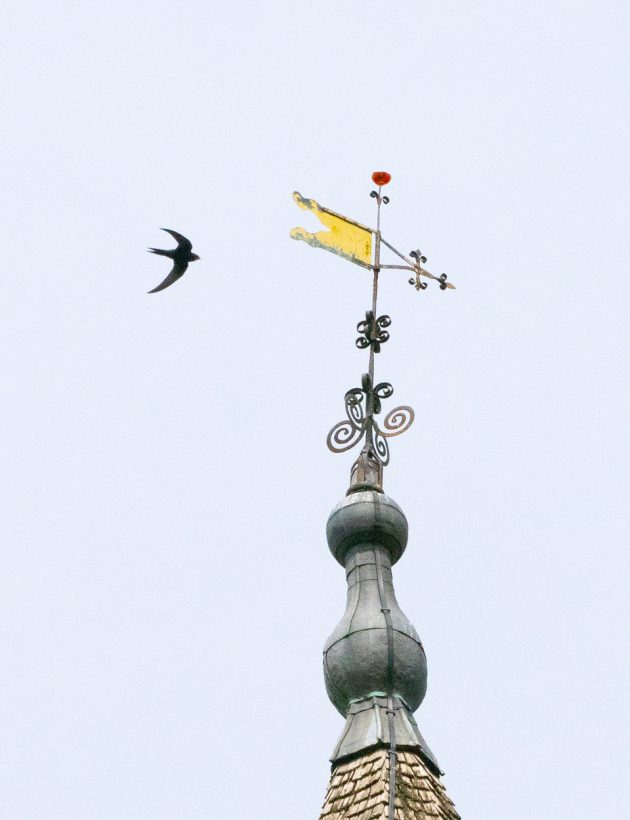
Swifts have a long association with church towers, despite once being known as Devil Birds because of their screaming calls and black plumage (Photograph by Martin Garwood)
My thanks to my friend and fellow swift-enthusiast Martin Garwood for letting me use a selection of his excellent photographs to illustrate this article. The Swift facts were sourced from David Lack’s classic work, Swifts in a Tower (1956). This book is based on a long-running study of Swifts nesting in a tower at Oxford University’s Museum of Science. Lack could only surmise where his Swifts wintered, but thanks to the use of geolocators we now know that British-breeding birds migrate to the Congo, before moving east to Mozambique. On their northern passage they migrate across the Gulf of Guinea, refuelling in West Africa before making the final move back to Europe. One tagged individual spent 15 days in Liberia, before flying 5,000km in five days to reach its nesting site in southern England.
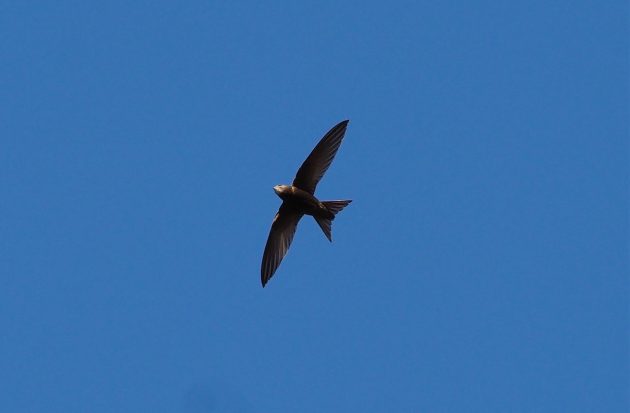













Unfortunately, most people have lost the ability to read Dutch but the best swift poem is by Guido Gezelle – it really captures the spirit and the sounds of swifts:
`Zie,zie,zie,
zie!zie!zie!
zie!!zie!!zie!!
zie!!!’
tieren de,
zwaluwen,
twee-driemaal
drie,
zwierende en
gierende:
`Niemand,die…
die
bieden de
stiet ons zal!
Wie,wie?wie??
wie???’
Piepende en
kriepende
zwak en ge-
zwind;
haaiende en
draaiende,
rap als de
wind;
wiegende en
vliegende,
vlug op de
vlerk,
spoeien en
roeien ze
ringsom de
kerk.
Lege nu
zweven ze,en
geven ze
burcht;
hoge nu
hemelt hun’
vlerke,in de
lucht:
amper nog
hore ik…en,
die ‘k niet en
zie,
lijvelijk
zingen ze:
`Wie???wie??wie?
wie…’
Needless to say that I love swifts (I have pallid ones here) and I love David’s writing about them!
Thanks David. Our common swifts also leave now but we are lucky that some pallid swifts hang around and lay a second clutch. This keeps some birds about until October. It’s regular practice here in Gibraltar to install swift nest boxes on all new buildings, and they work!
We have Chimney Swifts. On July 21, I saw 25 flying in a local park. It’s been a while since I’ve seen that many together. People here are always looking for ways to support them